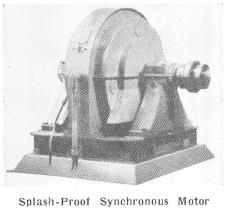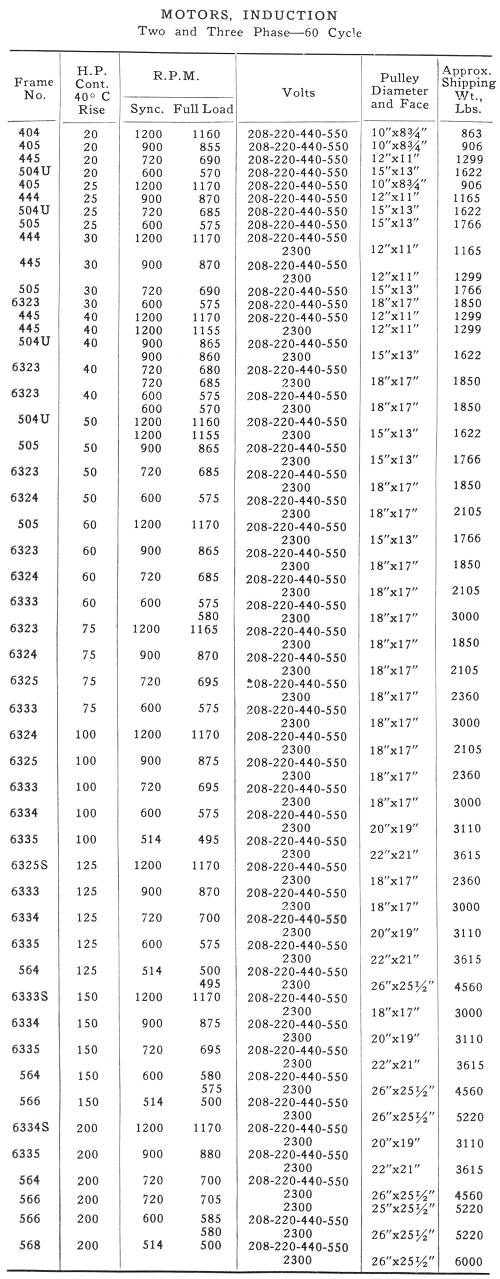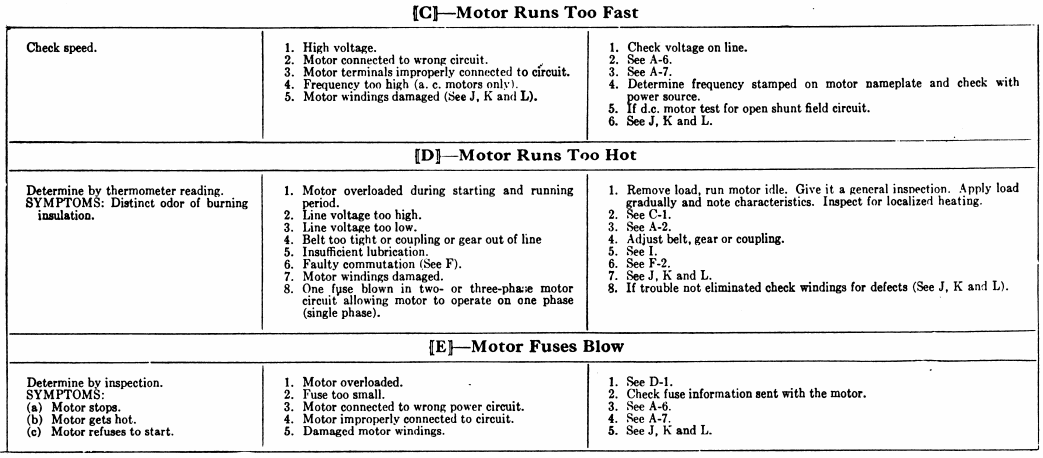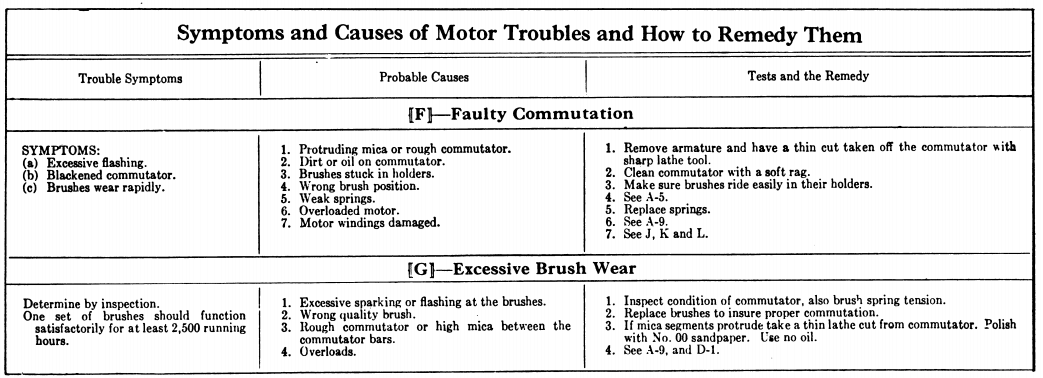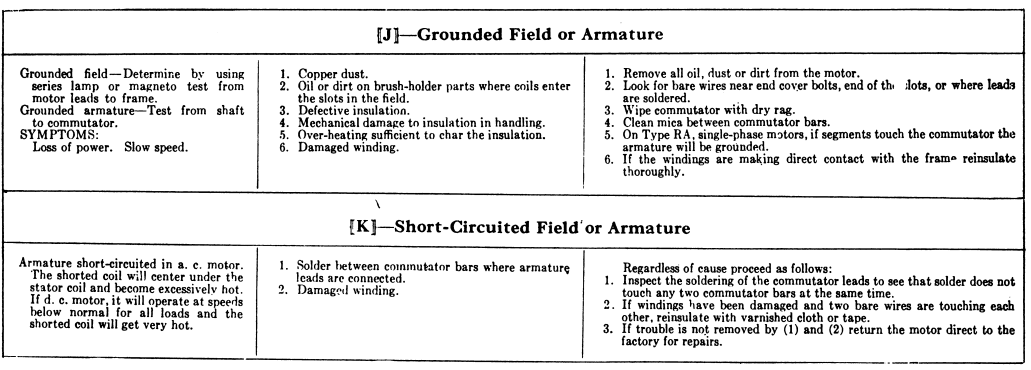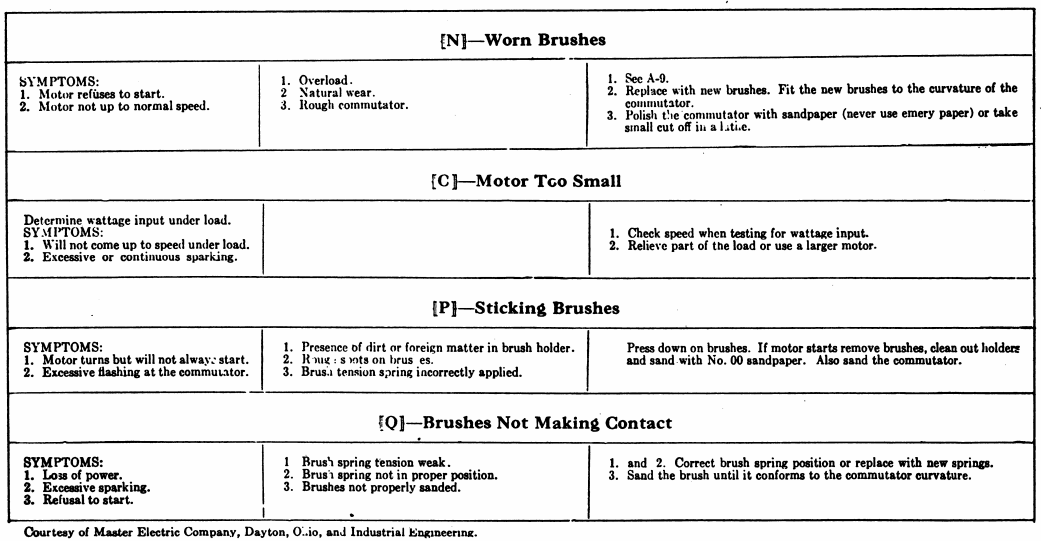Motor Switches
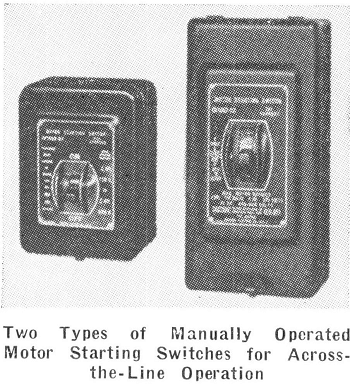
Motor starting switches have been developed for a wide variation of load requirements, and special switches are available for operation in damp or dust laden atmospheres with high efficiency. Local electrical codes should be carefully checked before final selection is made. Then the starting switch should be chosen to give the required overload and relay protection.
Additional data gladly furnished upon request.
Air Motors
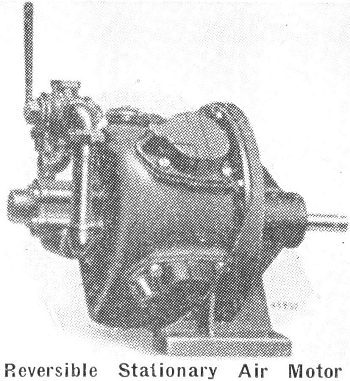
The small, sturdy Air Motor illustrated is an exceptionally useful unit in underground operations. It is available in both non-reversible and reversible types and, on account of its light weight, may be shifted from one task to another with little effort. This motor, in all sizes and types, is equipped to operate at 90 lbs. per square inch air pressure, and, at this pressure, has a range from 2.9 to 18 H.P.
It is particularly adapted to a variety of underground tasks and can be operated to drive either direct connected or through belt and pulley drive. Among the tasks which can be performed with this unit are driving ventilating fans, mine sump pumps or auxiliary pumps, diamond drills, and similar equipment.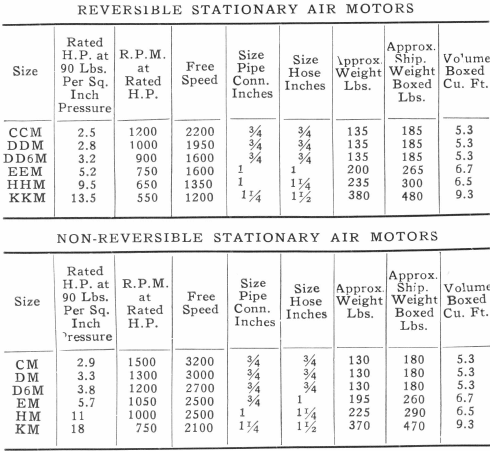
Fractional HP and General Purpose Motors
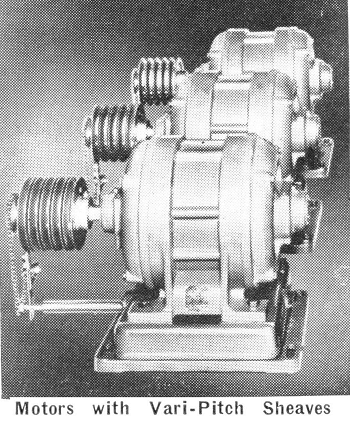
The modern electric motor installation the individual motor drive has practically replaced all other types. It is comparatively easy to obtain the required speed through the use of motors directly connected to the driven machine, through speed reducers, or the now more economical geared motors, or even through V-belt or chain or sprocket drive. The use of drivers of this type has resulted in greater efficiency, lower operating and maintenance costs, and easier accessibility than was the case with the formerly widely used lineshaft drive and its associated inconvenience. Motors have continued to be reduced in size and overall dimensions, while horsepower output has increased over the past few years until the individual electric motor drive has practically replaced all flat belt drives in new installations. Its use has proved of great value to mill operators due to the flexibility of circuits using machines that are self¬contained units.
The individual motor drive has also found rapid acceptance due to its adaptability to almost every type of driving problem. Electric motors have been developed to withstand the most severe operating conditions and meet exacting requirements. Let us make recommendations for motor type, size, and drive for most economical and efficient service and best suited to your particular problem.
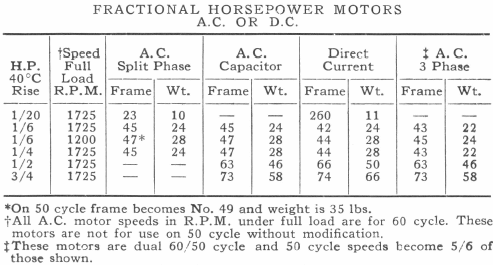
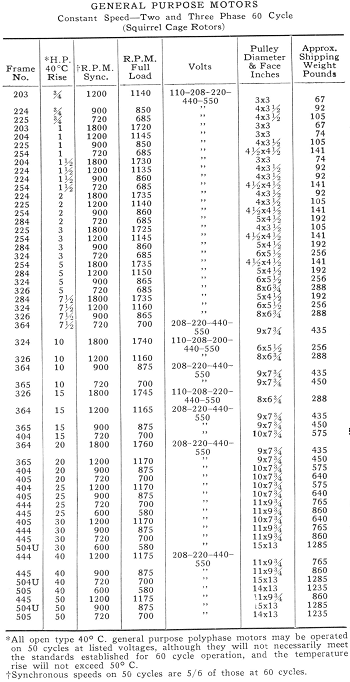
Synchronous Motors
Synchronous Electric Motors are available in many sizes from 20 horsepower to several thousand horsepower and in speeds from 80 R.P.M. to 3600 RPM. The characteristics are usually built into them as required for the specific application and can be constant, synchronous, starting, pull-in, and pull-out torques.
The applications usually consist of: power factor correction, or improving power factor, and for constant-speed as well as low-speed direct drives on heavy equipment such as ball mills, large crushers, and similar machines requiring high horsepower and low R.P.M.
They should be carefully applied to the load when used as prime movers as difficult starting may result if not specifically designed to start under heavy loads. Let us make recommendations for your proposed installation.
